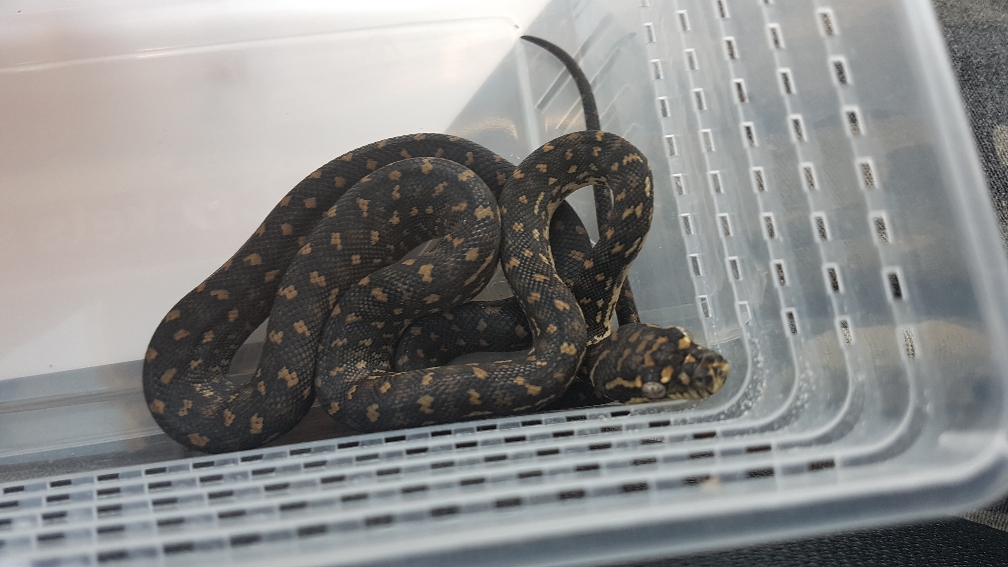Do you think that the days of pure lines and real locale variations existing with some integrity in the hobby are basically over, or at least on their way out? That's a bummer. It just feels as though something would be lost if there was only a sea of mixed and matched in the hobby with no value placed on anything beyond the paint job. It kind of makes me want to purposely go against the tide and to dig up and favour the old stuff over the newer, more exciting morphs. Someone should be preserving those, no? Let me know if you know anyone who feels the same way as I do about it and who already does this. I reckon that I probably have a heavy dose of new-comer-naive going on. That "Australian Dream Python" from yesterday was a bit grim.
Yes and no. Mostly yes. People don't care about locality. 15+ years ago I as a diehard locality nut. I was proud of my pure lines and I went to extreme lengths to source and verify locality pure animals. I lovingly bred them and put them up for sale. No one cared. Well, they loved that they were beautiful, healthy animals, but they almost never cared about the locality. I could tell you the exact sand dune my Knob-tailed Geckoes originated from, I could go and stand on the exact spot the founder animals of some of my python lines were collected on. No one cared. They just cared about labels. If I called something 'mega starglow lemon zap' people would have been excited and paid more, but if I said 'the 6th sand dune north of a town you've never heard of' they didn't care. I still love locality animals, a relatively vocal very small minority do, but even most of them have no concept of what locality means. To most of them, it's still about labels. Most people don't know where 'wheatbelt' is, they don't know where 'Tanami' is, they wouldn't point out Palmerston on a map, and 'locality' labels like 'sandfire' are used frivolously with no meaning. I used to sell my Water Pythons as 'Townsville' because Townsville was the closest place anyone would recognise to where the founder animals were collected (all within 1km of each other). When people hear these labels, do they imagine that the animals were collected from the middle of that town? Half the time these labels are deliberately misused, such as all the Renmark Mulgas which were sold as St George Mulgas because at the time St George Mulgas were all the rage (quite different animals, but both populations have similar colour...). I've seen wild 'Renmark Mulgas' across the state border in NSW which are clearly the same and part of the same population, and I'm guessing some of the Renmark Mulgas in captivity are from NSW not Renmark (which is in SA). The actual St George Mulgas aren't from the middle of St George anyway, they're from a large region.
So even if you want to be an actual purist, you quickly find that it was almost impossible from the start, and it almost completely impossible now other than a few specific exceptions.
Absolutely, the further time goes on, the more it will all be muddied. Look at the most common and popular captive snake in the world (Ball Python). Most people don't even know which continent it comes from, let alone care about locality. Same with the second most popular (Corn Snake). It's difficult to be sure a Corn Snake is a pure corn snake and not a hybrid. Other species were mixed in to introduce morphs. Now they're a big genetic soup.
I did say yes and no, mostly yes. The tiny bit of no is that wild animals for the most part are still pure (with notable exceptions around cities, with relocations being quite common now. I've seen plenty of local Brown and Tiger Snakes of the wrong type around the Melbourne region, especially in areas where snake catchers release things, just as an example, and it actually is a terrible shame for people to be relocating wild reptiles). As long as there are wild reptiles, some will make it into captivity through various channels.
Which lines of reptiles do you like? Do you honestly think you know the origins of your own animals? Do you honestly think you could source genuine provenance animals today or 10-20 years ago? You can find stuff with provenance labels, sure, but can you trust those labels? If so, that's pretty funny! 15-20 years ago I could still manage to track down who bred what and painstakingly find the origins of some things by talking to the people who collected the founding animals. That's now almost impossible for most things, and the trend will obviously only continue in one direction.
At some point you have to ask yourself why it matters? When I asked myself I honestly couldn't find an answer which held any weight. I just liked it for no sensible reason. I still do, but I can't think of any valid reason anyone else should. Do we care about the origins of domestic chickens? Where is the natural origin of chickens (Hint: They're hybrids!). Where is the natural origin of domestic cats and dogs? Can you point it out on a world map? What about goldfish? Guinea Pigs? The rats you feed your snakes? The crickets we feed our lizards? You can't even name the continent most of these things come from (most people wouldn't know any of them!) let alone anything about locality origin.
Until about 15 years ago I would have passionately debated for pure lines and against locality crossing etc. Heh, it's funny to think about how much has changed, especially myself.









